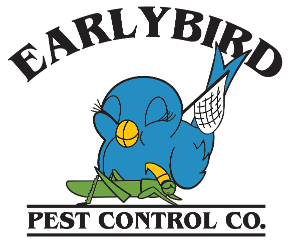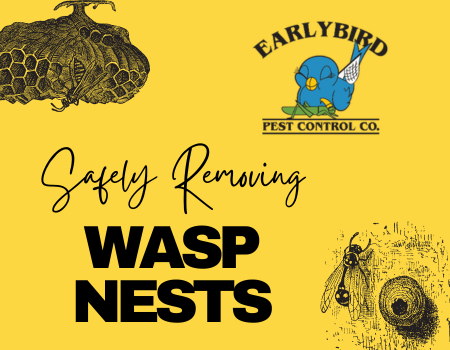Encountering a wasp nest on your property can be a daunting experience. Not only can wasps be aggressive when disturbed, but their stings can also cause painful reactions and allergic responses in some individuals. Swift and safe removal of wasp nests is essential to ensure the safety of yourself, your family, and your pets. In this guide, we’ll explore effective methods for removing wasp nests safely and swiftly, drawing on expert advice from pest control professionals at Early Bird Pest Control.
Understanding Wasp Nests:
Before delving into removal techniques, it’s crucial to understand the nature of wasp nests and the behavior of these stinging insects. Wasps typically build nests in sheltered locations, such as eaves, attics, tree branches, and shrubbery. Nests can vary in size and shape depending on the species, with common types including paper wasp nests, hornet nests, and yellow jacket nests. Identifying the type and location of the nest is the first step in planning a safe removal strategy.
Safety Precautions:
Safety should be the top priority when dealing with wasp nests. Before attempting removal, it’s essential to take the following precautions:
- Wear Protective Clothing: Cover yourself from head to toe in thick clothing, including long sleeves, pants, gloves, and a hat. Additionally, wear a face mask and protective eyewear to shield yourself from potential stings.
- Work During Dusk or Dawn: Wasps are less active during these times, making it safer to approach and remove the nest. Avoid attempting removal during the day when wasp activity is at its peak.
- Use Caution Around Nests: Approach the nest slowly and calmly, avoiding sudden movements that may provoke the wasps. Keep a safe distance from the nest and proceed with caution.
Methods for Wasp Nest Removal:
Once safety precautions are in place, there are several methods for removing wasp nests safely and swiftly:
- Chemical Spray: Chemical sprays designed specifically for wasp nest removal can be effective when used correctly. Stand at a safe distance from the nest and spray the insecticide directly into the entrance of the nest. Be sure to follow the instructions on the product label carefully and avoid inhaling the fumes.
- Soap and Water Solution: A mixture of dish soap and water can also be used to suffocate and immobilize wasps. Fill a spray bottle with soapy water and thoroughly saturate the nest. The soap coats the wasps’ bodies, making it difficult for them to fly, while the water weighs down the nest, causing it to collapse.
- Vacuum Method: For nests located in hard-to-reach areas or inside structures, using a vacuum cleaner equipped with a hose attachment can be an effective removal method. Approach the nest slowly and carefully with the vacuum, ensuring that the nozzle is securely attached to prevent wasps from escaping. Once the nest is vacuumed, seal the vacuum bag or container tightly and dispose of it immediately.
- Professional Pest Control Services: If you’re unsure about safely removing a wasp nest or if the nest poses a significant risk, it’s best to enlist the help of professional pest control services. Companies like Early Bird Pest Control have the expertise, experience, and equipment necessary to safely and swiftly remove wasp nests from residential and commercial properties. Trained technicians can assess the situation, identify the best course of action, and ensure that the nest is removed effectively without putting anyone at risk.
Preventing Future Infestations:
After removing a wasp nest, it’s important to take steps to prevent future infestations. This may include:
- Regularly checking your property for signs that there are wasps.
- Sealing cracks, gaps, and other potential entry points to prevent wasps from nesting.
- Removing sources of food and water that may attract wasps, such as uncovered garbage bins and standing water.
- Planting insect-repelling plants around your property, such as mint, marigolds, and citronella.
Removing wasp nests safely and swiftly requires careful planning, proper protective gear, and the right approach. Whether using chemical sprays, soap and water solutions, vacuum methods, or professional pest control services, prioritizing safety is essential to prevent stings and injuries. For expert assistance with wasp nest removal and other pest control needs, consider contacting Early Bird Pest Control. With their help, you can enjoy a wasp-free environment and peace of mind knowing that your property is safe from stinging insects.


Recent Comments